(The following dissertation is based in large part on a selection from R’ Shlomoh Brevda’s sefer Yibaneh Hamikdash, pp. 29-32.)
Anyone who has even a modicum of yiras Shamayim (fear of Heaven) in his heart must feel at least somewhat dispirited at the state of the world around him today. Deeds and attitudes that were unimaginable even a short time ago are today acceptable and even praised. As the mores of modern society resemble more closely those of Sodom, we almost seem to be witnessing the fulfillment of the verse: הוֹי הָאֹמְרִים לָרַע טוֹב וְלַטּוֹב רָע שָֹמִים חֹשֶׁךְ לְאוֹר וְאוֹר לְחֹשֶׁךְ שָֹמִים מַר לְמָתוֹק וּמָתוֹק לְמָר – “Woe to those who say on evil that it is good and on good that it is evil; they attribute darkness for light and light for darkness; bitterness for sweetness and sweetness for bitterness” (Yeshayah 5:20). And so, we are left to wonder: How did matters reach this point? What does it all mean?
Only on a Mountain
Insight into this issue may be gleaned by examining the events surrounding the Churban Beis Hamikdash (Destruction of the Holy Temple), which we commemorate each Tishah B’Av. The Mishnah lists the tragedies that transpired on this day, as it states (Ta’anis 4:6):
חֲמִשָּׁה דְבָרִים אֵרְעוּ… בְּתִשְׁעָה בְאָב, נִגְזַר עַל אֲבוֹתֵינוּ שֶׁלֹּא יִכָּנְסוּ לָאָרֶץ, וְחָרַב הַבַּיִת בָּרִאשׁוֹנָה וּבַשְּׁנִיָּה, וְנִלְכְּדָה בֶּיתֵּר, וְנֶחְרְשָׁה הָעִיר.
“Five events occurred…. on the ninth of Av: It was decreed on our forefathers (in the desert) that they would not be granted entry to the Land of Israel; the first and second Temples were destroyed; (the fortress of) Beitar was captured; and the city was plowed over.”
Regarding this last event, the Gemara (Ta’anis 29a) adds that it involved a certain Roman general named Turnus Rufus who, following the Churban, saw fit to sow further destruction by completely razing the Temple site. But his actions are somewhat puzzling. After all, the Beis Hamikdash was already destroyed and burnt to the ground. What more did he want, exactly? What did he have to gain by plowing over the sacred area?
The Brisker Rav clarifies the issue based on some teachings of Chazal. The medrash notes an apparent discrepancy in the Torah regarding the area known as “Moriah,” visited by Avraham Avinu, which was to become the Temple site. Originally, it is referred to as “Eretz Hamoriah – Land of Moriah” (Bereishis 22:2). Subsequently, however, it became known as “Har Hamoriah – Mountain of Moriah” (Divrei Hayamim II 3:1). What changed? Actually, quite a bit – in the geographical sense. According to the medrash, we see from here that the area was originally a deep valley. Once it was selected as the Temple site, however, it was deemed inappropriate for the King of Kings to dwell in a lowly area. And so, Hashem raised the contours of the land, such that it became mountainous (Yalkut Shimoni § 100; Zeis Ra’anan § 5).
We see, then, that for the Shechinah (Divine Presence) to rest in the Temple, the area must be raised and exalted. And this is a precondition for the Shechinah’s eventual return, as well, a point underscored by the Tosefta (Berachos 1:16), which states explicitly: אֵין שְׁכִינָה חוֹזֶרֶת עַד שֶׁתֵּעָשֶׂה הַר – “The Shechinah will not return until the area is mountainous.”
The Nefarious Goal
Thus, explains the Brisker Rav, the motives of Turnus Rufus become clearer. Apparently well-informed of the conditions for Hashra’as HaShechinah (resting of the Shechinah), this is precisely what he sought to thwart; for the resha’im (wicked) are not satisfied until they completely drive the Shechinah away and prevent its return. And so, in an attempt to deny the Shechinah a place to dwell – then or in the future – he purposefully and brazenly flattened the area, reversing its raised quality.
It is somewhat sobering to take note of just how invested the wicked are in this goal. R’ Chaim Vital, prime disciple of the Arizal, understands that this factor was on display at the time of the Churban. For, as he explains, we find something most curious about those who destroyed the Beis Hamikdash. We tend to imagine them engaging in their destructive activity with glee, as they watched the walls tumble and the flames consume the environs. But it turns out, they were actually disappointed with the outcome. Such is the intimation of the passuk in Eichah (that chronicles and laments the Churban), which reports how the enemy gnashed their teeth in frustration: כָּל־אוֹיְבַיִךְ שָׁרְקוּ וַיַּחַרְקוּ־שֵׁן אָמְרוּ בִּלָּעְנוּ אַךְ זֶה הַיּוֹם שֶׁקִּוִּינֻהוּ מָצָאנוּ רָאִינוּ – “All of Your enemies hissed and gnashed their teeth; they said, ‘We have swallowed up, but this is the day for which we had hoped – we found, and saw’” (2:16). R’ Chaim explains that the reference is to the fact, revealed by Chazal (Eichah Rabbah 1:41), that the enemy came across a Beis Hamikdah that had already been effectively destroyed by a fire sent down from Above. Finding, then, that they were denied the “joy” of destroying the Beis Hamikdash with their own hands, they were frustrated and gnashed their teeth. “This is the day we had been waiting for,” they bemoaned. “Instead, we came and discovered that, to our chagrin, it was already demolished.” So burning was their desire to banish the Shechinah from the earth that they yearned for the “privilege” to do so themselves.
Thus, we can gain some understanding of the attitude that – as an outgrowth and derivative of the Churban – persists even to this day. We see the world waging such an intense campaign against the Shechinah – evidenced by their zeal to promote heresies such as Evolution and to completely eradicate all decent and moral standards. It is clear that they seek to transform the world into a place that is completely uninhabitable for the Shechinah.
And so we mourn at this time this abject state of affairs, a product of the Temple destroyers and their modern-day incarnations. But we also yearn and pray for the restoration and the return of Hashem’s Shechinah. The Brisker Rav adds that this is the intent of the verse from the Shabbos hymn, “Dror Yikra”: אֱלֹקִים תֵּן בַּמִּדְבָּר הַר – “O G-d, place a mountain in the desert.” That is, we ask that the desolate and “plowed-over” site be raised once again to accommodate the Shechinahwith the rebuilding of the Beis Hamikdash, speedily in our days.







